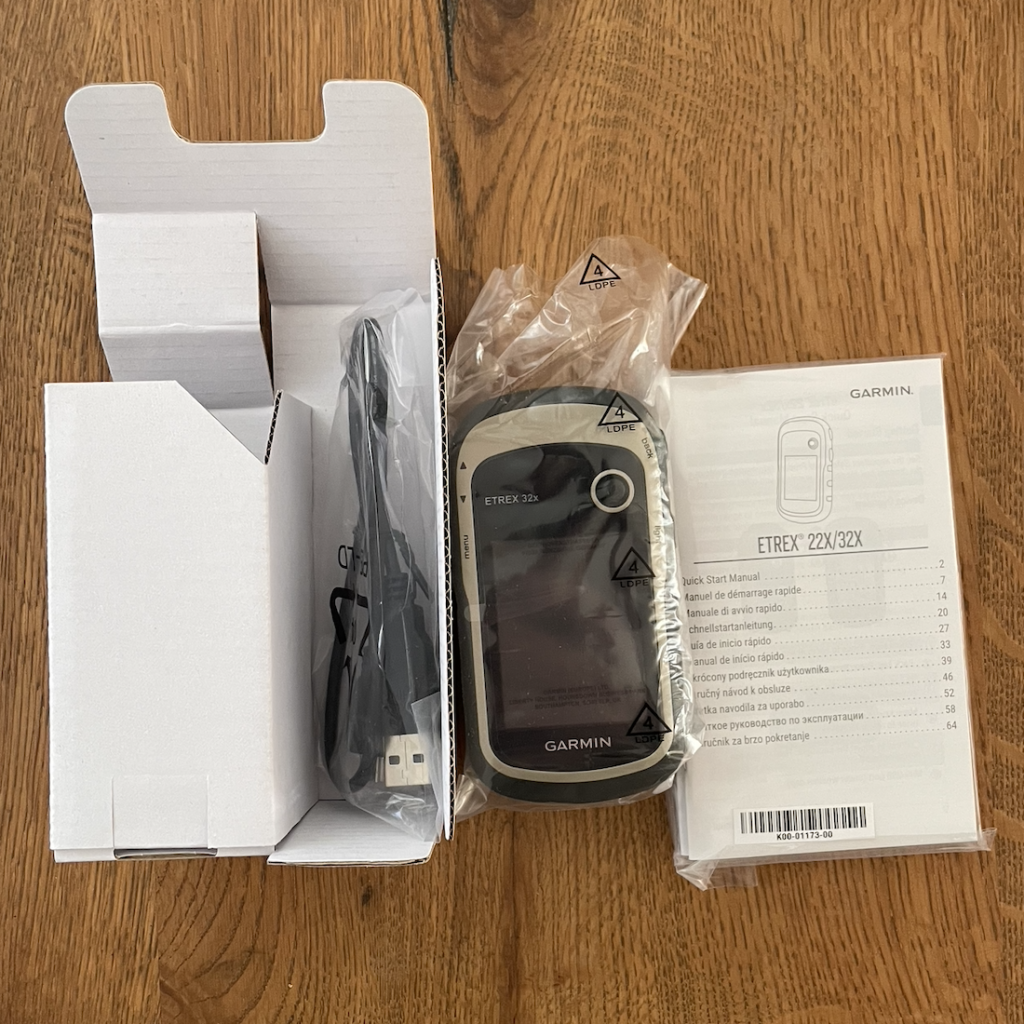This week brought a hint of cycling-friendly weather as most of the snow and ice finally melted. To test the conditions, we ventured out on a 40-kilometer ride. While the ride itself was refreshing, my feet didn’t agree – they were so cold by the end that I couldn’t feel them, let alone move my toes. Winter cycling, as always, comes with its own set of challenges, maybe next time I’ll bring along my overshoes.
On this ride however, I had a secondary mission: to pick up a couple of new cycling gear additions, including the highlight of my week – a brand-new Garmin eTrex 32x.
Yes, I officially now own four eTrexes, which might put me in the pathological range… Including this latest addition, my collection now consists of:
- An eTrex 30, bought in November 2011
- An eTrex 30x, bought in November 2016. On a side note, in hindsight, we didn’t actually need to replace our eTrex 30. It had stopped working during route navigation, leaving us stranded in the middle of nowhere. Only later did we discover that route navigation is limited to a maximum of 200 points – a lesson we unfortunately learned after purchasing a new device…
- An eTrex 35t, bought in September 2023
- And now, the eTrex 32x


I didn’t retire the 30 and 30x because they stopped functioning. In fact, they both still work fine, but both silicone bumpers around the power and menu buttons began to crumble, letting water and dust seep into the devices. This makes them a ticking time-bomb, at some point the electronics are going to fail, and I’ll be left on the side of the road unable to know where navigate next. It’s a real shame, as these older models are otherwise incredibly reliable.
What happened to the eTrex 35t
When searching for a replacement for the 30 and 30x, I initially thought the eTrex 35t would be a significant upgrade. I did consider the 32x, but the idea of uploading tracks via my phone directly to Garmin Connect was tempting, as was the ability to export .fit files that included heart rate data. Plus, it would save me from using my watch to record rides which doesn’t work out because battery life was always an issue on longer rides.
However, after using it for roughly a year, the 35t proved disappointing:
- It suffered a short circuit in the rain during my EV15 ride.
- Battery life was abysmal – a set of AA batteries lasted only 8 to 10 hours (if I was lucky). I’m mindful of the environmental impact, and using so many AA batteries feels unnecessarily wasteful, so I always carried a power bank, and therefore, a frame bag.
- The screen is larger, but resolution is lower.
- The map interface design drove me crazy – particularly the inability to display just two small data fields on the map. You’re stuck with four or none. The issue with having no data fields is that I risk missing waypoints. On the other hand, having four data fields shrinks the map so much that navigating becomes a real challenge. It might be a first-world problem, but for the price, I would expect the UI design to account for this detail.
- Finally, there’s the option to hide and show the data screens by clicking the arrow on the top of the map, but using the touchscreen was a nightmare in cold or rainy weather, especially with gloves on.
After a year of frustration, I decided it was time to simplify things and returned to a trusty, button-operated model: the eTrex 32x.
A Journey Full Circle
In 2020, I started this website as a resource for hard-to-find eTrex tips and tricks. Over time, it’s grown to include various cycling adventures and gear reviews. Today, we’re going back to basics with a new addition to the eTrex library: my favourite eTrex setup. If you’re curious about how to I get the most out of my eTrex, head over to the new guide.
Happy reading and, as always, stay safe and keep the rubber side down!